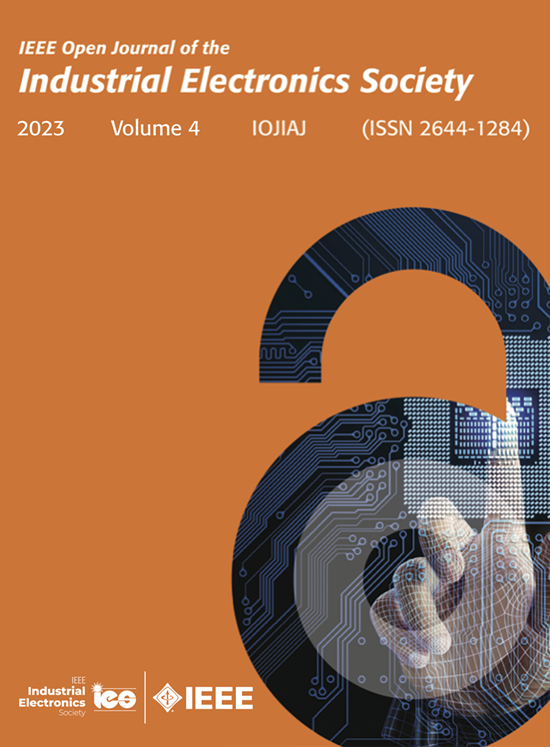具有双功率处理能力的无变压器分压DC-DC变换器
IF 4.3
Q1 ENGINEERING, ELECTRICAL & ELECTRONIC
IEEE Open Journal of the Industrial Electronics Society
Pub Date : 2025-03-22
DOI:10.1109/OJIES.2025.3572429
引用次数: 0
摘要
部分功率转换器的概念很有前途,因为它可能带来显著的成本、重量、体积和功率损耗的减少。然而,文献中提出的大多数部分功率变换器包括一个高频变压器,将功率从电路的一部分重定向到另一部分,这增加了成本、重量、体积和损耗,并抵消了部分概念带来的大部分潜在优势。本文描述和分析了两种变换器的变型,这种变换器的功率是传统变换器的两倍。这些转换器可以用于负载电压可以分成几个相似特性的子电压的应用,这使得它通常适用于电池,燃料电池,电解槽和led。使用这些拓扑需要两个主要条件:首先,负载上的电压需要控制在一个有限的范围内,通常是[50%;100%]或更少,其次,必须能够轻松地将负载电压拆分为几个较小的直流电压。尽管如此,这些限制仍然允许广泛的应用,包括电化学负载,如电池,燃料电池,电解槽,甚至光伏系统。对其主要性能进行了分析,并通过实验结果进行了验证。缺乏变压器和部分功率处理能力的拓扑导致了99%以上的极高效率。本文章由计算机程序翻译,如有差异,请以英文原文为准。
TransformerLess Partial Voltage DC–DC Converter With Double Power Processing Capacity
The concept of partial power converters is promising since it might bring significant cost, weight, volume, and power losses reduction. However, most partial power converters presented in the literature include a high-frequency transformer to redirect power from one part of the circuit to another, which adds cost, weight, volume and losses, and cancels out most of the potential advantages introduced by the partiality concept. In this article two variants of a transformerless partial voltage converter capable of supplying twice the power of conventional converters are described and analyzed. These converters can be used for applications in which the load voltages can be split into several sub-voltages of similar characteristics, which makes it typically applicable to batteries, fuel cells, electrolyzers and LEDs. Two main conditions are required to use these topologies: first, the voltage across the load needs to be controlled in a limited range only, typically [50%;100%] or less, and second, it must be possible to split easily the load voltages in several smaller dc voltages. Nevertheless, these restrictions still allow a wide range of possible applications including electrochemical loads such as batteries, fuel cells, electrolyzers, and even PV systems. Their main properties are analyzed and confirmed by experimental results. The lack of transformer and the partial power processing capabilities of the topologies result in extremely high efficiencies of over 99%.
求助全文
通过发布文献求助,成功后即可免费获取论文全文。
去求助
来源期刊

IEEE Open Journal of the Industrial Electronics Society
ENGINEERING, ELECTRICAL & ELECTRONIC-
CiteScore
10.80
自引率
2.40%
发文量
33
审稿时长
12 weeks
期刊介绍:
The IEEE Open Journal of the Industrial Electronics Society is dedicated to advancing information-intensive, knowledge-based automation, and digitalization, aiming to enhance various industrial and infrastructural ecosystems including energy, mobility, health, and home/building infrastructure. Encompassing a range of techniques leveraging data and information acquisition, analysis, manipulation, and distribution, the journal strives to achieve greater flexibility, efficiency, effectiveness, reliability, and security within digitalized and networked environments.
Our scope provides a platform for discourse and dissemination of the latest developments in numerous research and innovation areas. These include electrical components and systems, smart grids, industrial cyber-physical systems, motion control, robotics and mechatronics, sensors and actuators, factory and building communication and automation, industrial digitalization, flexible and reconfigurable manufacturing, assistant systems, industrial applications of artificial intelligence and data science, as well as the implementation of machine learning, artificial neural networks, and fuzzy logic. Additionally, we explore human factors in digitalized and networked ecosystems. Join us in exploring and shaping the future of industrial electronics and digitalization.
 求助内容:
求助内容: 应助结果提醒方式:
应助结果提醒方式:


